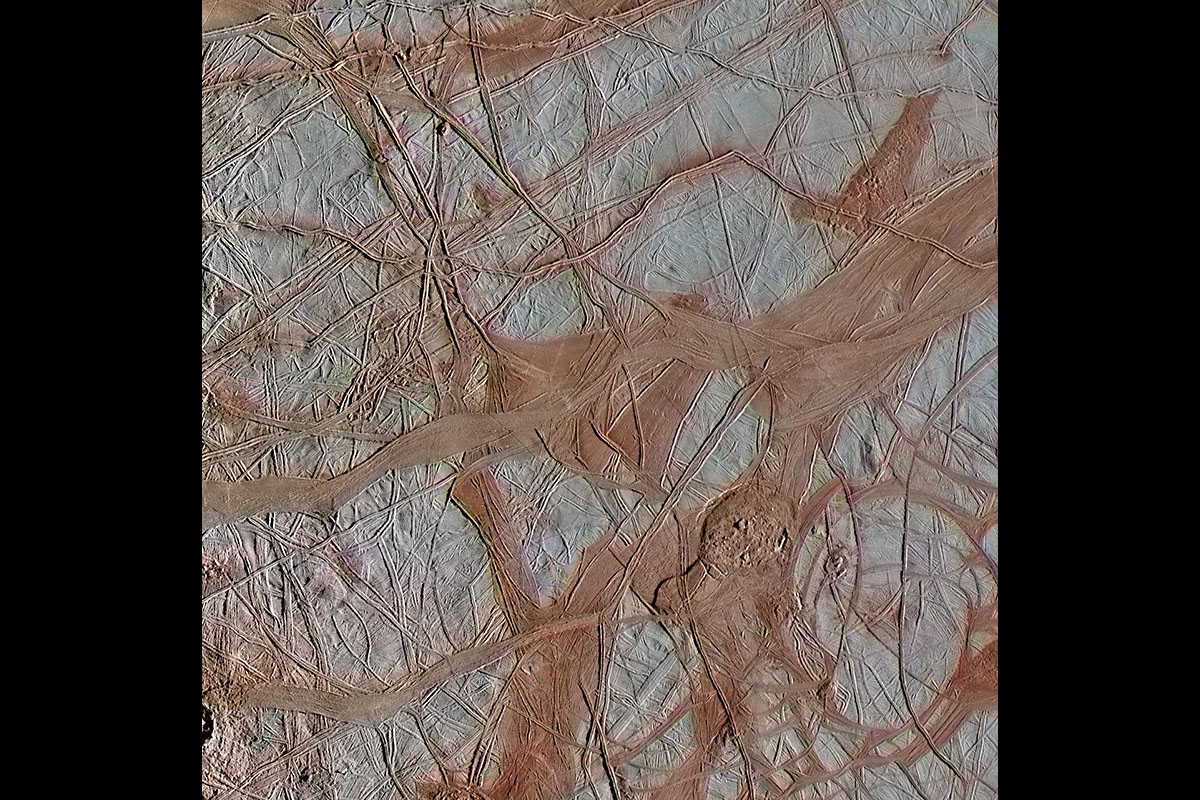This image of an area called Crisscrossing Bands shows ridges, which may form when a crack in the surface opens and closes repeatedly. In contrast, the smooth bands shown here form where a crack continues pulling apart horizontally, producing large, wide, relatively flat features. (NASA/JPL-Caltech/SETI Institute)
Home This image of an area called Crisscrossing Bands shows ridges, which may form when a crack in the surface opens and closes repeatedly. In contrast, the smooth bands shown here form where a crack continues pulling apart horizontally, producing large, wide, relatively flat features. (NASA/JPL-Caltech/SETI Institute) This image of an area called Crisscrossing Bands shows ridges, which may form when a crack in the surface opens and closes repeatedly. In contrast, the smooth bands shown here form where a crack continues pulling apart horizontally, producing large, wide, relatively flat features. (NASA/JPL-Caltech/SETI Institute)
This image of an area called Crisscrossing Bands shows ridges, which may form when a crack in the surface opens and closes repeatedly. In contrast, the smooth bands shown here form where a crack continues pulling apart horizontally, producing large, wide, relatively flat features. (NASA/JPL-Caltech/SETI Institute)




